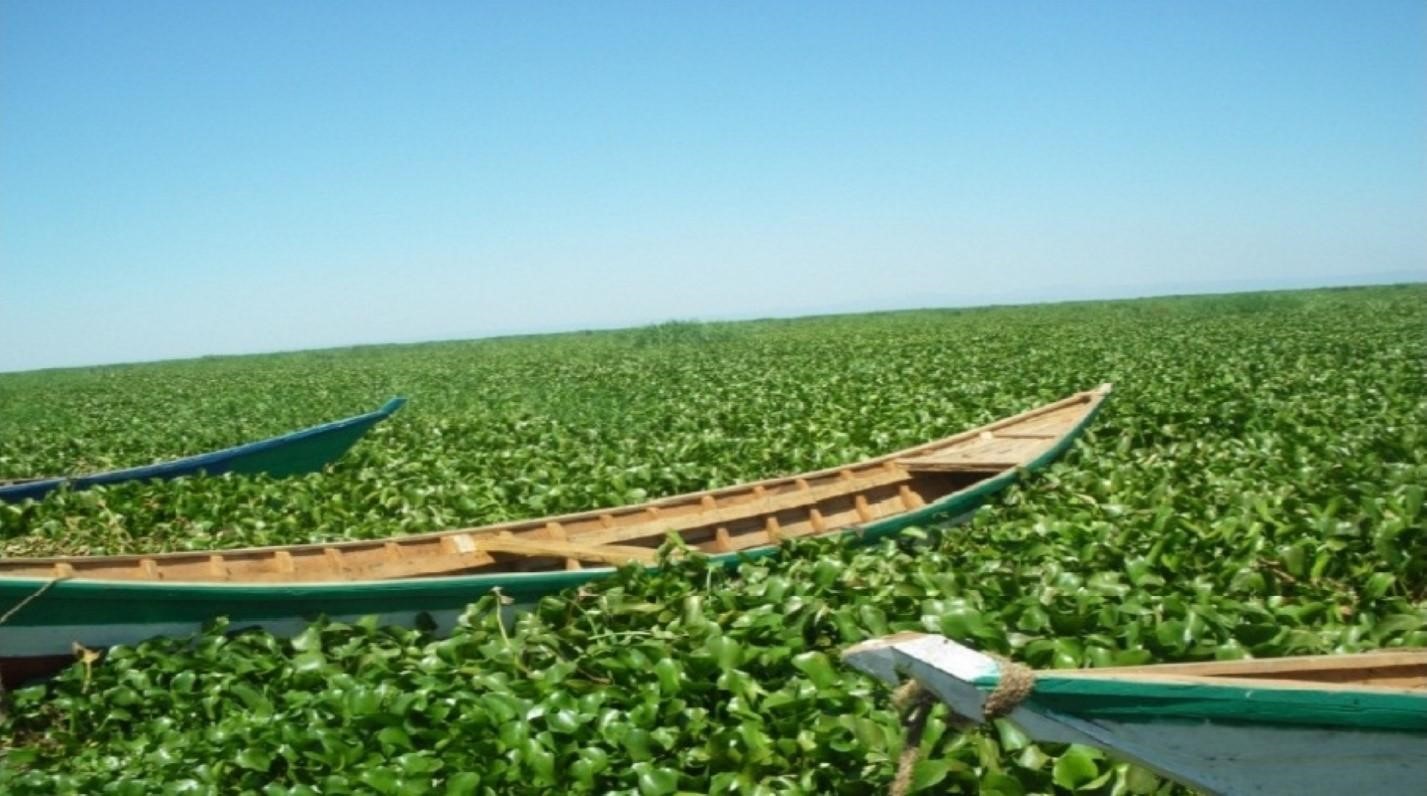From invasive weed to opportunity: the case of water hyacinth – Water hyacinth (Eichhornia sp.), a free-floating aquatic plant native to the Amazon basin, has spread globally due to its ornamental appeal in ponds. Today, it ranks among the world’s most invasive aquatic species, causing severe ecological, social, health, and economic problems in tropical freshwater systems. In particular, stagnant water bodies like parts of Lake Tana and Lake Victoria in East Africa have experienced serious disruptions to their flora, fauna, and local livelihoods due to this weed.
Water hyacinth poses a major threat to freshwater ecosystems. Its proliferation is often aggravated by eutrophication – a process fuelled by nutrient runoff from surrounding agricultural activities. Traditional control methods (biological, mechanical, and chemical) have shown limited long-term success, calling for an innovative strategy that embraces circular economy principles.
In places like Lake Tana, Ethiopia, large volumes of water hyacinth have been manually cleared, only to return within a few years. Ironically, the biomass removed became another ecological burden due to its difficult disposal.
Now, the focus is shifting toward repurposing water hyacinth rather than eradicating it. The real question is not how to eliminate the weed, but how to convert it into a useful raw material, thus transforming a problem into an opportunity.
Biology and Proliferation
Water hyacinth is a tropical plant with thick green leaves and lavender flowers. It reproduces primarily by vegetative propagation through stolons and can double its biomass every 11 to 15 days under optimal conditions. Each plant can produce up to 5,000 seeds that remain viable for 15–20 years and are often dispersed by water birds or livestock.
Favourable conditions include water temperatures of 28–30°C and a pH of 4.0–8.0. At maturity, dense mats can cover water surfaces up to 2 meters thick, reducing oxygen and sunlight penetration, altering water chemistry, and increasing water loss through evapotranspiration.
Negative Impacts
Water hyacinth negatively affects lake communities in many ways:
• Navigation and fishing are disrupted as thick mats block boat passages.
• It creates ideal breeding grounds for mosquitoes and other disease vectors, increasing risks of malaria, skin rashes, gastrointestinal diseases, and schistosomiasis.
• It blocks water treatment facilities, irrigation channels, and hydroelectric stations, disrupting essential services.
• It depletes oxygen and blocks sunlight in aquatic ecosystems, harming fish populations and native plants.
Fishers report reduced catches and access to landing areas, with resulting income losses.
Control Methods
Three main strategies are used to manage water hyacinth:
• Chemical control: Effective but environmentally hazardous. Dead plant matter adds to water pollution problems.
• Biological control: Uses specific insect species, but the process is slow and less reliable in large infestations.
• Mechanical removal: The most practical method despite its initial and maintenance costs—particularly challenging in low-income countries due to equipment needs and accessibility.
Strategic Value & Circular Economy
Turning water hyacinth into a bioresource offers a sustainable solution:
• It can be used for biogas, organic fertilizer, building panels, animal feed, mulch, and even paper and furniture.
• With high water content (over 90%), drying is essential—solar energy can be used in tropical areas.
• As fish feed, it’s a cost-effective alternative rich in proteins, fibers, minerals, and bioactive compounds.
• Studies show benefits in fish growth for tilapia, catfish, carp, and grass carp when dry hyacinth is included in their diets (up to 25%).
Nutritional Profile (dry matter)
| Component | Shoots (%) | Roots (%) | Whole Plant (%) |
| Crude protein | 14.8 | 9.3 | 11.4 |
| Crude fiber | 15.6 | 11.0 | 63.9 |
| Ash | 22.5 | 49.6 | 36.8 |
| Potassium (K) | 3.16 | 0.83 | 1.99 |
| Calcium (Ca) | 2.13 | 3.27 | 2.70 |
| Magnesium (Mg) | 1.69 | 2.77 | 2.23 |
(Source: M.F. Abdel-sabour, Water Hyacinth: Available and Renewable Resource)
The shoots are rich in protein and vitamins (A, B1, B2, beta-carotene), making them suitable for monogastric animals or aquaculture, while the fibrous roots are better suited for ruminants such as goats and sheep.
Economic and Environmental Potential
Water hyacinth can become the cornerstone of local green economies in areas heavily infested by the weed and affected by unemployment. Manual and mechanized collection operations could employ hundreds of people.
With proper planning, the biomass can feed biorefineries that produce fish feed and other bio-products, transforming the challenge into social and economic opportunity. Pilot activities in Ethiopia and Uganda, conducted by the Alveo Cooperative, have already shown promising results in integrating dried water hyacinth into tilapia farming.
Additionally, the plant’s ability to absorb pollutants and sequester carbon makes it a valuable tool in water purification and climate mitigation.
From invasive weed to opportunity: the case of water hyacinth










